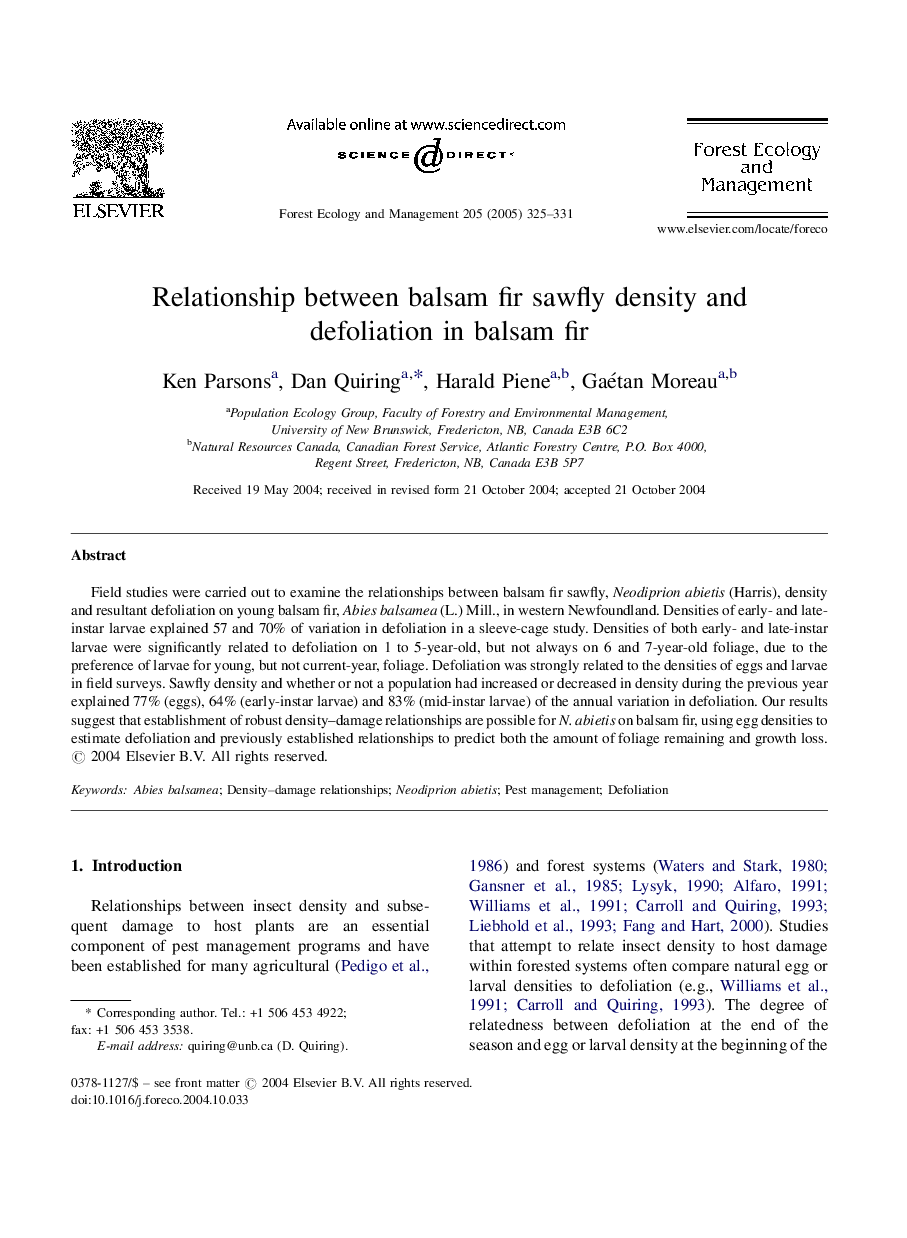| Article ID | Journal | Published Year | Pages | File Type |
|---|---|---|---|---|
| 9620514 | Forest Ecology and Management | 2005 | 7 Pages |
Abstract
Field studies were carried out to examine the relationships between balsam fir sawfly, Neodiprion abietis (Harris), density and resultant defoliation on young balsam fir, Abies balsamea (L.) Mill., in western Newfoundland. Densities of early- and late-instar larvae explained 57 and 70% of variation in defoliation in a sleeve-cage study. Densities of both early- and late-instar larvae were significantly related to defoliation on 1 to 5-year-old, but not always on 6 and 7-year-old foliage, due to the preference of larvae for young, but not current-year, foliage. Defoliation was strongly related to the densities of eggs and larvae in field surveys. Sawfly density and whether or not a population had increased or decreased in density during the previous year explained 77% (eggs), 64% (early-instar larvae) and 83% (mid-instar larvae) of the annual variation in defoliation. Our results suggest that establishment of robust density-damage relationships are possible for N. abietis on balsam fir, using egg densities to estimate defoliation and previously established relationships to predict both the amount of foliage remaining and growth loss.
Related Topics
Life Sciences
Agricultural and Biological Sciences
Ecology, Evolution, Behavior and Systematics
Authors
Ken Parsons, Dan Quiring, Harald Piene, Gaétan Moreau,
